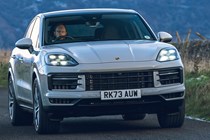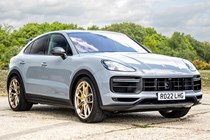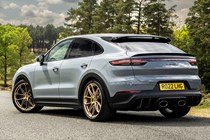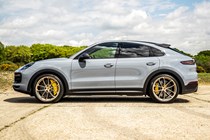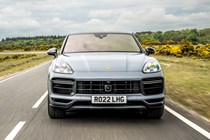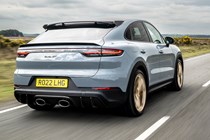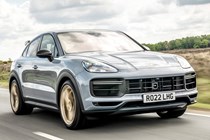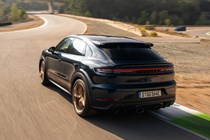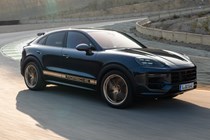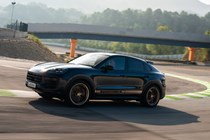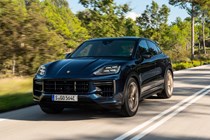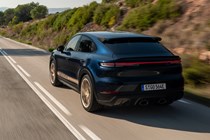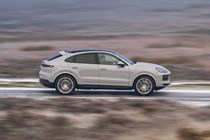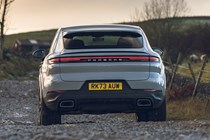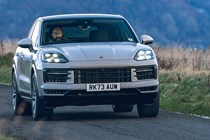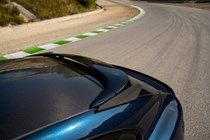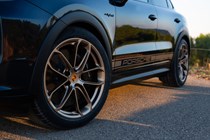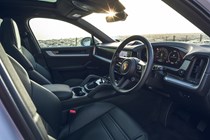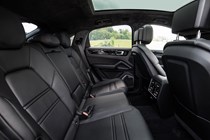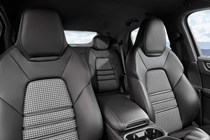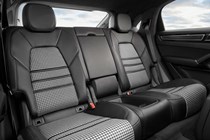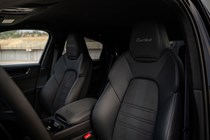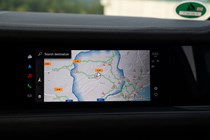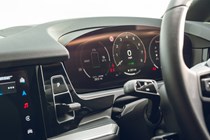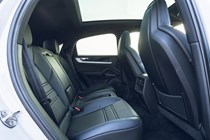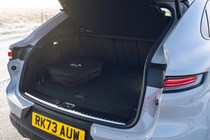
Porsche Cayenne Coupe engines, drive and performance
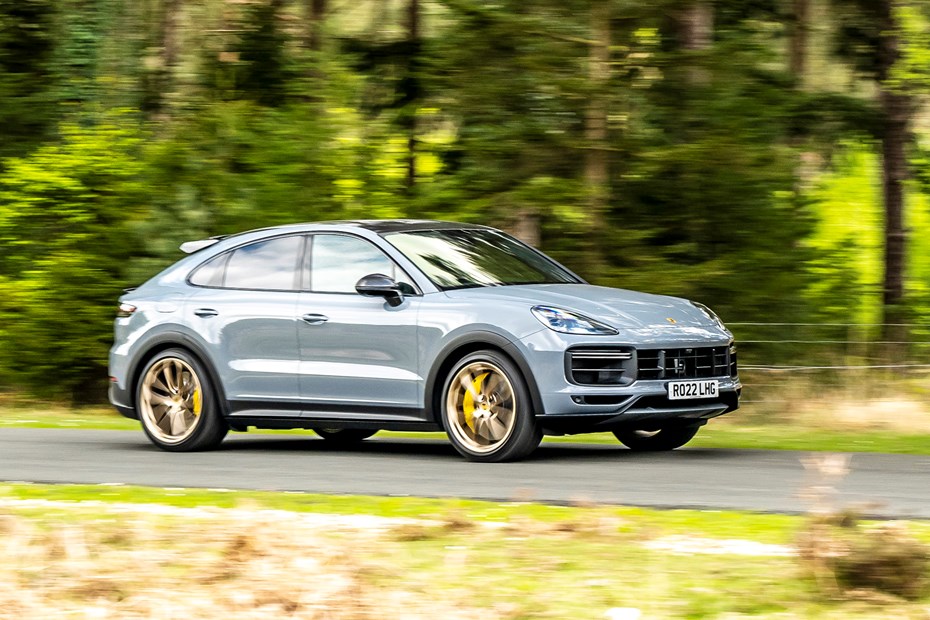
- Fabulous performance available
- Facelift reduced to two conventional petrols
- But now offers three plug-in hybrids
Petrol engines
The 2023 facelift has slashed the number of available conventional petrol engines. Where there was previously standard, S, GTS, Turbo and Turbo GT, there is now only regular and S. But that’s not all bad news.
For not only is there a wider range of plug-in hybrids instead, the standard model – which is powered by a turbocharged 3.0-litre V6 – is up to 353hp (from 340hp). And the S now benefits from a 4.0-litre V8 turbo with 474hp; previously this too was a V6 (albeit with 440hp).
It’s not just the increased horsepower but the cachet of those extra cylinders that adds to the appeal of the Cayenne S Coupe now. As such this is proving to be a popular choice among UK buyers.
All Cayennes feature four-wheel drive and a superbly smooth Tiptronic S eight-speed automatic transmission. The E-Hybrid variants build on this by adding an electric motor into the gearbox arrangement and a battery big enough to allow this to drive the car all by itself.
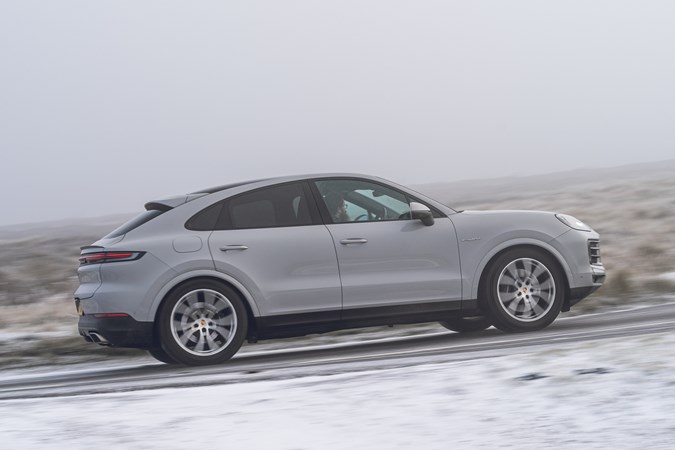
Plug-in hybrid petrol engines
Following the facelift there are now three E-Hybrid Cayenne Coupes; there were two before. These are plug-in hybrid electric vehicles (PHEVs) and each features a 130kW / 178hp electric motor and a 25.9kWh battery pack.
With the motor capable of delivering 450Nm by itself, it makes relatively easy work of moving around 2.5-tonnes of SUV, and can do so for up to 84mph and 48 miles at a time according to WLTP figures. We got 32.2 miles of mixed driving in near-freezing conditions, so expect nearer 40 in tolerable temperatures.
There are also upgrades to the recuperation system, making this much more efficient than previously, so the percentage of time these run on electric power may be greater than those figures suggest. The system does its best to keep the batteries at least partially charged so the electric power can be used to deliver the full performance.
And there is plenty of performance. The standard E-Hybrid uses a 304hp version of the 3.0-litre V6, which together with the electric motor makes a combined 470hp and 650Nm of torque (pulling power), enough for 0-62mph in 4.9 seconds. The S E-Hybrid gets the 353hp V6, making a combined 519hp and 750Nm, dropping the 0-62mph time to 4.7 seconds.
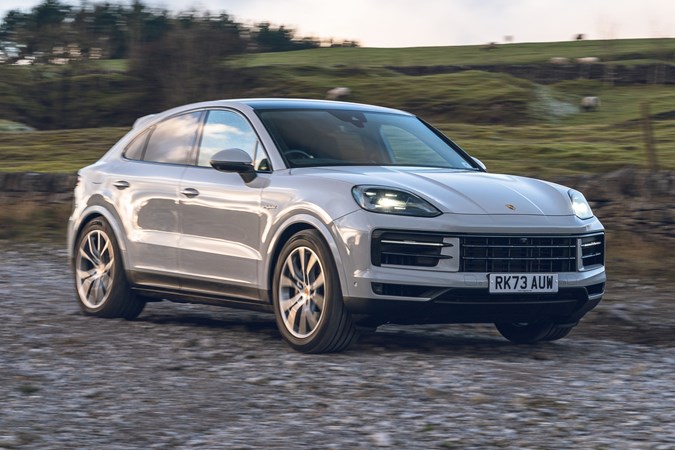
This doesn’t seem like a big difference on paper but the extra torque makes the S feel properly muscular on the road. Unless you’ve recently been driving the Turbo E-Hybrid, anyway.
For the Turbo E-Hybrid is in a different league entirely. This combines the same e-motor and battery with a 599hp 4.0-litre V8 turbo to create a 739hp monster that also produces 950Nm of torque. This is the most powerful engine ever fitted in a Cayenne, making it possible to do 0-62mph in 3.7 seconds. Not to mention 183mph.
You can take this performance further with the GT Package. Only available on the Turbo E-Hybrid Coupe, this is ‘over 100kg’ lighter thanks to a carbonfibre roof, titanium exhaust and other reductions, and features changes to the chassis for an even sharper drive. While power output is the same, the revisions are enough to shave the 0-62mph time down to 3.6 seconds and raise top speed to 190mph.
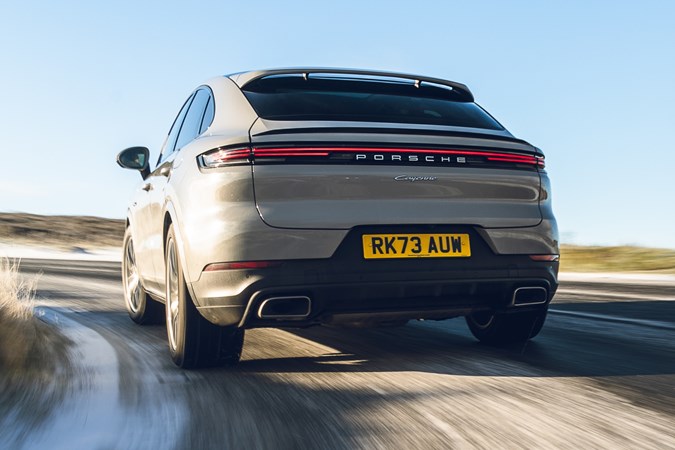
It is an exceptionally fast SUV, feeling truly ferocious on the road but also capable of serene composure when you’re taking things easy.
What’s it like to drive?
- Nimble and agile handling characteristics
- Feels incredibly sharp for such a large car
- Driving modes really tweak the experience
Like the regular Cayenne and smaller Porsche Macan, the Coupe handles like a car far more compact than its hefty dimensions would lead you to expect. The steering is direct without feeling nervous or twitchy, with a consistent feel through the wheel.
Throw it into a corner and there’s barely any bodyroll to speak of. It all works well to deliver a drive that’s more akin to a hot hatchback than a large SUV – it’s easily one of the best SUVs to drive, beating the impressive BMW X5 and X6. You’ll need to go for a far more expensive Ferrari Purosangue or Aston Martin DBX to get a more enjoyable driving experience. And you might still enjoy the comprehensively polished performance of the Porsche, even so.
If you want the finest handling Cayenne Coupe, the Turbo GT (below) remains unbeaten. With Porsche’s Dynamic Chassis Control (PDCC), which is essentially a very technical anti-roll system, it corners with incredible agility and response. Despite its huge size, it doesn’t steamroller the road, instead feeling light on its feet and positively brimming with feedback.
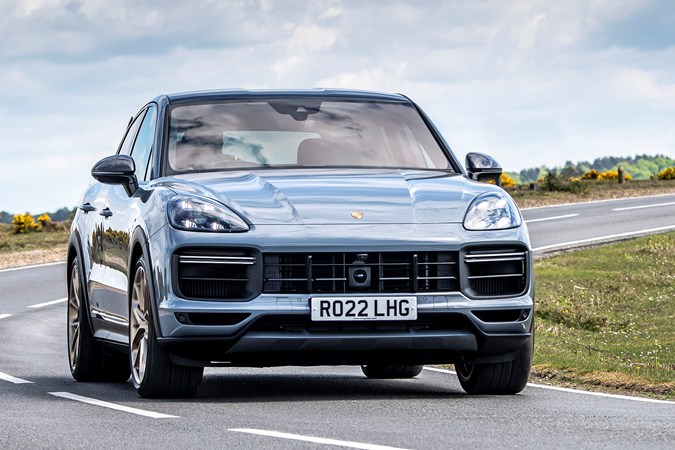
Since the Turbo GT is now discontinued, the ultimate Cayenne performance baton passes to the Turbo E-Hybrid Coupe with GT Package. This is the region of 300kg heavier, because of its hybrid system, which means it can’t match the dizzy heights of the Turbo GT exactly. But with 100hp more, its raw performance is deeply impressive, while a number of bespoke changes to the steering and suspension help elevate its ability in the corners well beyond the standard Turbo E-Hybrid.
On these newer models, you have to pay extra for the PDCC tech, and can add further advances via optional rear-wheel steering and torque vectoring, which splits power between the rear wheels to increase dynamic capability (this is standard on GT Package cars). It’s all worth it, though, as everything works seamlessly together to deliver an exhilarating drive.
The good news is that you don’t have to spend all the money to get a fun Cayenne. A regular E-Hybrid with the optional air suspension and four-wheel steering still has the same tactile feel and sense of agility that its more expensive siblings possess.
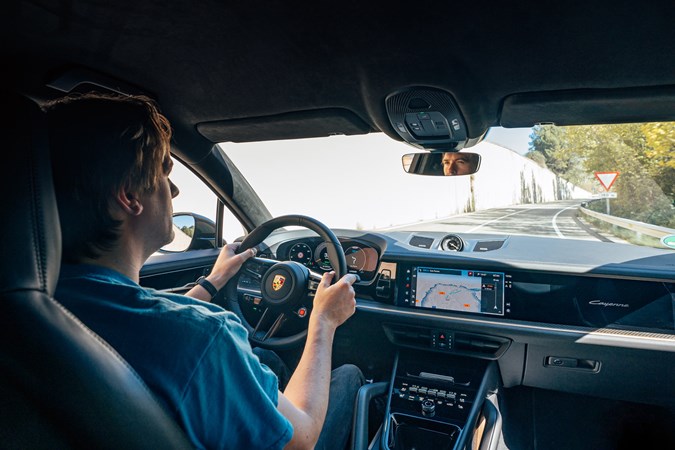
You’d be forgiven for expecting the Cayenne Coupe to be rather uncomfortable because of its sporting roots. And it certainly can be, on the biggest wheels and in the firmest suspension settings. However, the more powerful facelifted cars come with updated two-chamber, two-valve air suspension, which improves composure and control.
As such, they offer a far greater range between their most comfortable settings and their most performance orientated settings. These are controlled by a selection of driving modes (exactly how many depends on whether you specify the Sport Chrono Pack, which sharpens everything further with a Sport Plus mode), and can transform the Cayenne Coupe from a truly luxury experience into a street fighter at the twist of a dial attached to the steering wheel.
A Range Rover might be softer, but no alternative offers such a well-rounded approach.


